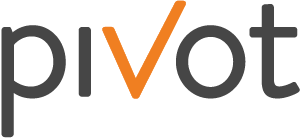When it comes to converting potential senior living residents to actual residents, there are some tried-and-true methods you’re likely using, like phone calls, in-person meetings and tours. While these are great practices, you should also consider how to digitally capture and appeal to potential leads. Why? Because while you’re busy making calls and running to meetings, you can be passively capturing even more leads online by simply offering great content that is only made available once a person provides their contact information.
As discussed in our blog post, CTAs are the first step in the online conversion process that transforms potential customers to real leads. From the CTA, users are directed to a landing page, the second step in the process.
What is a Landing Page?
A landing page is a special webpage that expands on the offer made in the CTA and uses an online form to capture a user’s name and contact information in exchange for the offer, which they will download or have access to on the thank you page (the next step in the online conversion process).
The point of the landing page is to attract the user enough that they will want to provide their information in exchange for the offer you’re providing. This offer could be a helpful FAQ that delves into pain points expressed by real seniors and their families, an in-depth white paper, or even a well-designed checklist seniors can use during community tours that will help assess whether their needs match what a community provides. Read more about great content.
Once your offer is decided on and a CTA, using best practices, has been created, the next step is to create your landing page. A great landing page, with the help of a graphic designer, will feature:
1. Content that is eye-catching and to-the-point, but honest.
Your message should stay consistent from the CTA to the landing page, so consider adapting your CTA language (which should be short anyway) into an eye-catching headline. Accompanying your headline should be a descriptive paragraph or two on what the user is being offered, whether it’s a guide, white paper, checklist or template. Simply answer the question, “Why should I download this content?” Don’t try to be vague in the hopes people will be intrigued enough to give you their info. Instead, be straightforward and, above all, don’t misrepresent what the offer is. You don’t want users to feel like they had to jump through hoops to get the content they want, only to be misled.
2. Smart design that keeps the user on the page and interested.
When I called the landing page a special webpage earlier in this post, it’s because it is a special webpage. It shouldn’t look like all the other pages on your website and should only be focused on the offer itself. This means that your normal navigation bar and footer information should not be included. Why? In this instance, your navigation bar and any other links are just a distraction and an opportunity for users to click off your landing page before they’ve provided their name and information. The goal of the landing page is to get that information, so the only real interaction a user should be able to make with the page is to provide that information. Smart design also incorporates eye-catching imagery and will move the user with ease from the headline and offer description to the form where they will provide their information.
3. An online form that gets the information you want but doesn’t go overboard.
As mentioned, the landing page will need to feature an online form where users provide their information to get the offer they want. This form is customizable and you can ask users for any information you want. You’ll want their name and email regardless of anything, but you might also find it useful to ask what town or state they live in or their age. It’s generally agreed, however, that you should only ask for information that matches the offer you’re providing. That is, don’t create a form that takes 45 minutes to fill out that asks personal questions and preferences, if your offer is, for instance, a white paper on a topic that can be easily Googled.
4. Social sharing icons so users can spread the word.
You’re offering great content, so it only makes sense to encourage people to share it. The landing page is the perfect spot in the online conversion process to feature social sharing buttons because it will allow users who are directed to it to see what the offer is all about while potentially becoming new leads as well.
How do you know if you’ve created a good landing page? According to recent data, the media conversion rate across industries varies between 3 to 5.5 percent. If you’re below that, you should make some tweaks. If you’re above that, you’re doing pretty well! Luckily, it’s easy to test your landing page by making changes to the copy or reworking your form (for example, reducing the amount of required fields). If your conversion rate is low no matter what you try, it’s probably time to rethink the offer altogether.
Would you like us to assess your landing pages and conversion process? Send us an email, tell us what you are offering seniors, and we’ll follow up with a quick assessment of what’s working and what’s not, for free.

